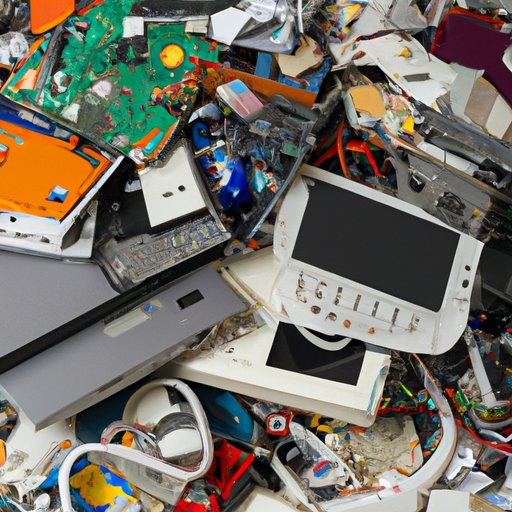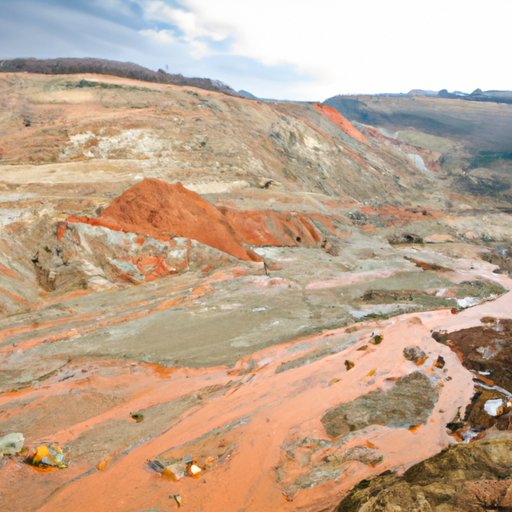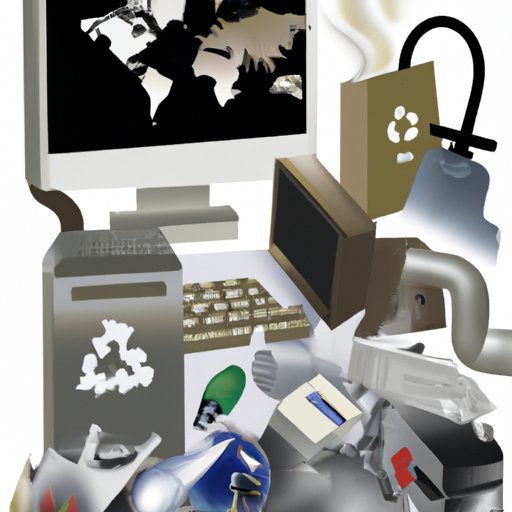Introduction
Technology is an integral part of our lives. From smartphones and computers to cars and airplanes, technological advancements have enabled us to do things that would have been unimaginable even a few decades ago. However, with all the benefits that come from technology, there are also some negative impacts on the environment.
In this article, we will explore how technology affects the environment negatively and what can be done to reduce those negative impacts. We will look at how increased carbon emissions from manufacturing, excess waste creation from disposable electronics, pollution from mining of resources, energy consumption from data centers, unsustainable e-waste disposal practices, and loss of natural habitats due to industrialization are all contributing to environmental damage.

Increasing Carbon Emissions from Manufacturing
Carbon emissions are one of the main causes of global warming and climate change. According to the Environmental Protection Agency (EPA), carbon dioxide emissions accounted for approximately 82% of all U.S. greenhouse gas emissions in 2018.
Manufacturing processes are a major source of carbon emissions. The production of materials such as steel, aluminum, cement, plastics, and chemicals requires large amounts of energy, which leads to the release of carbon dioxide into the atmosphere. In addition, many of these materials are transported around the world, further increasing carbon emissions.
One way to reduce carbon emissions from manufacturing is to use renewable energy sources such as solar and wind power. Companies can also invest in energy efficiency measures such as installing more efficient lighting systems and updating their machinery to reduce energy consumption.

Excessive Waste Creation from Disposable Electronics
Disposable electronics, such as cell phones, computers, and other electronic devices, are becoming increasingly common. According to the United Nations University, the amount of electronic waste generated worldwide is expected to reach 50 million tons by 2021.
These disposable electronics create a lot of waste, both in terms of the physical material used to make them and the energy consumed during their use. For example, when cell phones are discarded, they contain toxic materials such as lead, cadmium, and mercury that can leach into the soil and pollute water sources. In addition, the production of these electronic devices consumes a lot of energy, leading to increased carbon emissions.
One way to reduce the waste created by disposable electronics is to increase recycling efforts. Consumers should take advantage of local electronics recycling programs to ensure that their old devices are properly disposed of. Companies can also design products with longer lifespans and fewer parts that need to be replaced over time.

Pollution from Mining of Resources
Mining of resources such as coal, oil, and minerals is necessary for the production of many goods and services. However, it can also have a significant negative impact on the environment. Mining often involves the use of heavy machinery, which can cause air and water pollution. It can also lead to deforestation, destruction of natural habitats, and soil erosion.
One way to reduce pollution from mining is to invest in more sustainable mining practices. This includes using clean technologies such as electric vehicles and renewable energy sources, as well as reducing the amount of waste produced during the extraction process. Companies can also work with local communities to ensure that their operations do not disrupt the environment or endanger people’s health.
Energy Consumption from Data Centers
Data centers are responsible for storing, processing, and transmitting vast amounts of information. While these facilities are essential for modern businesses, they consume a lot of energy. According to the U.S. Department of Energy, data centers account for about 2% of total U.S. electricity consumption.
The energy consumption of data centers can be reduced by improving server and storage efficiency. Companies can also switch to renewable energy sources such as solar and wind power. Finally, cooling techniques such as evaporative cooling can be used to reduce the amount of energy required to keep the data center cool.
Unsustainable E-Waste Disposal Practices
E-waste is a growing problem due to the rapid advancement of technology. Electronic waste, or e-waste, is any item with a plug or battery that is no longer wanted or needed. Common examples include computers, televisions, mobile phones, and other household appliances.
Unfortunately, much of this e-waste ends up in landfills or is illegally shipped overseas, where it is often dumped in developing countries and can have a devastating impact on the environment and human health. To reduce the environmental damage caused by e-waste, consumers should take advantage of local recycling programs, while companies should focus on designing products with longer lifespans and fewer components that require replacement.
Loss of Natural Habitats due to Industrialization
Industrialization is the process of transforming an economy from an agricultural-based system to a manufacturing-based system. This process has enabled us to produce more goods and services in less time, but it has also had a significant negative impact on the environment. Industrialization often leads to deforestation, destruction of natural habitats, and pollution of air, water, and soil.
To reduce the environmental damage caused by industrialization, companies should focus on investing in clean technologies such as renewable energy sources and electric vehicles. They should also strive to minimize their use of resources and implement waste management strategies to reduce pollution.
Conclusion
Technology is an essential part of modern life, but it also has a negative impact on the environment. Increased carbon emissions from manufacturing, excessive waste creation from disposable electronics, pollution from mining of resources, energy consumption from data centers, unsustainable e-waste disposal practices, and loss of natural habitats due to industrialization are all contributing to environmental damage.
However, there are steps that can be taken to reduce these negative impacts. Consumers should take advantage of local recycling programs, while companies should focus on investing in renewable energy sources and clean technologies, as well as designing products with longer lifespans and fewer components that require replacement.
(Note: Is this article not meeting your expectations? Do you have knowledge or insights to share? Unlock new opportunities and expand your reach by joining our authors team. Click Registration to join us and share your expertise with our readers.)
